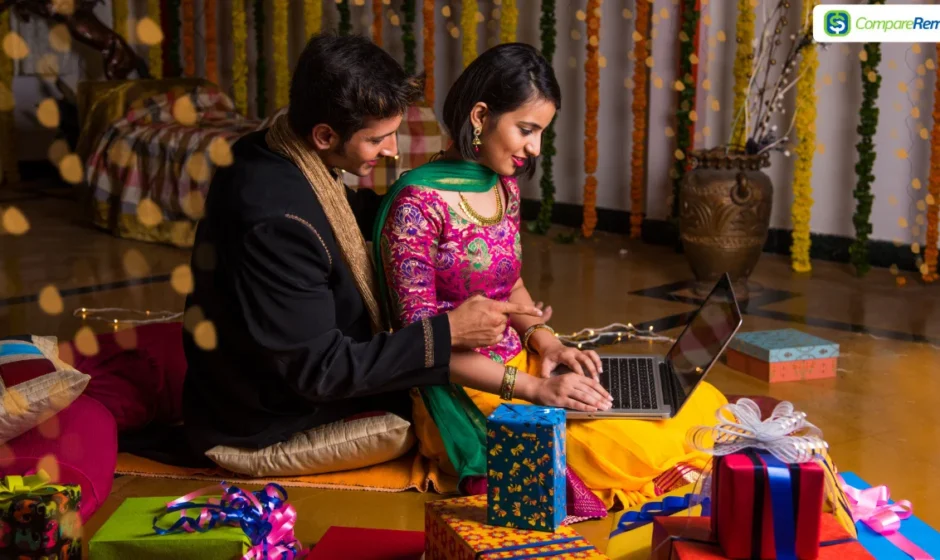As the Indian diaspora continues to thrive in the United States, the rich tapestry of traditions and customs from the homeland weaves its way into the cultural fabric of the new world. One such tradition that has found a special place among Indian communities in the USA is the exchange of return gifts. In this article, we explore the significance of Indian return gifts in USA, how they bridge cultural gaps, and the delightful variety of items that have become cherished tokens of appreciation.
I. Cultural Connection:
The practice of giving return gifts, also known as “tambulam” in some regions of India, has deep cultural roots. It is a gesture of gratitude and appreciation, expressing thanks for the time spent together during an event or celebration. This tradition has seamlessly transitioned into the lives of Indian families in the USA, serving as a way to maintain cultural connections, honor guests, and share a piece of Indian heritage.
II. Celebratory Occasions:
Return gifts are a common feature at various celebratory occasions in Indian households, both in India and abroad. Events like weddings, baby showers, festivals, and housewarmings are perfect occasions for the exchange of these thoughtful tokens. The gifts, ranging from traditional to contemporary, symbolize good wishes and strengthen the bonds of friendship and family.
III. Symbolism and Significance:
The selection of return gifts is often guided by cultural symbolism and significance. Traditional items such as brass or silver utensils, ornate jewelry boxes, and intricately designed idols are chosen for their auspicious meanings. These gifts are not just material possessions; they are symbols of prosperity, blessings, and the hope for a bright future.
IV. Bridging Generations:
In the USA, where the Indian diaspora spans multiple generations, the tradition of return gifts serves as a bridge between the old and the new. Elders pass down the values associated with these gifts to the younger generation, ensuring that cultural practices are preserved and celebrated. The exchange of return gifts becomes a way for the diaspora to stay connected to their roots and share the beauty of their traditions with the broader community.
V. Fusion of Cultures:
While the core essence of return gifts remains rooted in Indian traditions, the diaspora in the USA has also embraced a fusion of cultures. This is reflected in the choice of gifts, which may include a mix of traditional Indian items and contemporary, locally available options. This fusion not only adds variety to the selection but also allows for a more inclusive celebration that resonates with a diverse audience.
VI. Diverse Gift Options:
The range of Indian return gifts available in the USA has expanded over the years, catering to diverse tastes and preferences. From intricately designed silk sarees to handcrafted jewelry, and from aromatic spices to personalized items like photo frames and custom-made chocolates, the choices are vast. This diversity ensures that hosts can select gifts that align with the occasion and the varied tastes of their guests.
VII. Online Platforms and Convenience:
The advent of online platforms has further facilitated the exchange of Indian return gifts in the USA. Families can now explore a plethora of options, place orders, and have the gifts delivered directly to their doorstep. This convenience has not only made the process more accessible but has also opened up opportunities for individuals to explore a wider range of traditional and contemporary items.
VIII. Environmental Consciousness:
In recent times, there has been a growing awareness of environmental sustainability, and this has influenced the selection of return gifts. Many families are now opting for eco-friendly options such as reusable tote bags, plantable seed paper, or organic and locally sourced products. This shift towards sustainability reflects a broader global consciousness while maintaining the spirit of gift-giving.
The tradition of Indian return gifts in the USA is a testament to the resilience of cultural practices and the ability of communities to adapt and evolve. As the diaspora continues to thrive and contribute to the diverse cultural landscape of the United States, the exchange of return gifts serves as a heartwarming bridge between the rich traditions of India and the dynamic, multicultural tapestry of the new world. In the act of giving and receiving these tokens of appreciation, the Indian diaspora not only expresses gratitude but also ensures that the warmth of tradition is shared and celebrated across generations.



